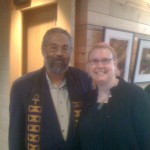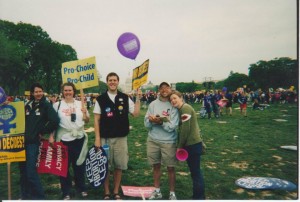 Curriculum & Instruction, Game Theory
Curriculum & Instruction, Game Theory  3 Comments
3 Comments Role of a Lifetime: Reverb Broads Summer #3
 Reverb Broads Summer, Prompt #3: Who are your role models? (by Dana at Simply Walking on this Earth)
Reverb Broads Summer, Prompt #3: Who are your role models? (by Dana at Simply Walking on this Earth)
As I got thinking on this question, I realized that my list of role models was, in fact, very short. This is not to say that I’m not surrounded by a beloved community of inspirational people. There are hundreds, maybe thousands, of people whom I admire more than words can express, from Nobel laureates, to fellow parents, to brilliant academics, to powerful advocates for a more just and loving world.
But I make the distinction between those whom I admire, and those from whom I’ve consciously modeled some part of myself. I’m not much of a follower, even for people I admire–it must be the mile-wide anti-authoritarian streak in me. I’m a weird, idiosyncratic independent, and while I synthesize lessons from everything I see and learn around me, I almost never seek to fit myself into anyone else’s pattern.
The only case I can think of where this is not the case is in my teaching. I’ve been inordinately blessed by an abundance of phenomenal, life-changing teachers throughout my academic career, and their styles of imparting knowledge and wisdom (not the same thing) were hugely influential in the formation of my own teaching style.
When I moved to Whitewater, just before fifth grade, I’d only had one teacher who had rocked my world: Mrs. Smigelski, the Gifted and Talented coordinator at my suburban Milwaukee elementary school. She introduced me to ideas like brainstorming other uses for completely mundane objects, like a row of cardboard egg carton bumps (what, they’ve got a better name?) or the empty bubbles cough drops fit in. Sure, it sounds hokey, but it was a break from the soul-crushing boredom of constant work on academics I’d mastered before I’d ever darkened the school’s doorway.
The teachers I encountered when I started in Whitewater exploded every idea I’d ever had about how school was supposed to be. Both my fifth and sixth grade teachers were men–a novelty in my world so far. They used games to teach, lots of games, from weeks-long roleplaying games about early American settlement and Western expansion, to intensely strategic board games about Roman chariot races, solving mysteries in Victorian London, and World War I aerial dogfights. With these tools, they got a level of attention and work out of 10- and 11-year-olds that, faced with my own son of that age level, I find frankly astonishing. And, among all the games and lessons, they found little ways to introduce us to culture that most kids don’t discover for decades. We thrilled to some of the most terrifying ghost stories I’ve ever come across. We listened to Bill Cosby records and read funny stories by Patrick McManus. We watched episodes of Sherlock Holmes Mysteries, the pitch-perfect Jeremy Brett ones.
From these teachers, I learned that games and humor could teach just as (if not more) effectively than rote memorization. I learned that an anecdote that humanizes a concept or a period of history sticks with students far longer than dry recitations of names and dates. And I learned that good games not only teach about their setting, but they teach about being a good person–learn the rules, take your turn, think creatively, work together, win and lose with grace and empathy.
When I got to high school, I encountered teachers who further shaped my idea of how the mentor/student relationship could be. Much of this was due to the extra work they put in, far above and beyond the school day bounded by bells. Our social studies teacher was also our yearbook editor, locked into the school weekend after weekend on interminable deadlines. Our English teacher was also the drama program director, supervising endless rehearsals and set-construction sessions. Our French teacher helped us organize the annual Mardi Gras dance, and bravely ventured across France with about two dozen high schoolers. Our Band director was also the one who pushed us around the field to learn marching band drill, and coordinated our enthusiastic efforts for pep band during basketball season. And our Choir conductor (also my church choir conductor) baked us treats and prepped us for contests and musicals.
And for all their time and effort, they got shenanigans. We called them by first names and nicknames. We pulled pranks all the time. We signed such luminaries as Han Solo, Mickey Mouse, and Elvis Presley out of study hall into the yearbook office. We talked Madame into letting us play petonque in the classroom, and go Christmas caroling in April to the Spanish class next door. We sang Monty Python’s Lumberjack Song in the football stands while waiting for the marching band halftime show, hoping to earn that quelling look from our usually unflappable band director. We put Cheez Doodles and Dr. Pepper into the yearbook index (Doodles, Cheez and Pepper, Dr., respectively).
The shenanigans weren’t the point, though, and the teachers saw clearly that our hijinks were a sign that we loved them and trusted them to know that we didn’t lavish our twisted affections on just anyone. And I learned that you don’t have to sacrifice authority or respect when you reach out and befriend your students. If kids love you, they’ll do extraordinary things, without the teacher even needing to ask. And if they trust you, you can go places–talk about awkward subjects, teach sensitive lessons, confront harsh realities–that a safer relationship couldn’t support.
So I’ll be my own kind of parent, and friend, and activist, and writer–I’m never going to be quite like anyone else, and I’m good with that. But as a teacher? I want to be just like my role models.

 Nightmares, though…nightmares are something else entirely. Sure, I had bad dreams when I was a kid. My grandparents took me with them to see
Nightmares, though…nightmares are something else entirely. Sure, I had bad dreams when I was a kid. My grandparents took me with them to see 
 A big part of me is Hermione Granger. I’m a bossy know-it-all witch, always eager to share what I’ve learned with other people. That’s why I’m happiest when I’m teaching–all that reading and study is zero fun if I’m not sharing it with someone else. I’d rather spend my vacation in the restricted section of the library, and I’m a bit befuddled by how little attention most people seem to be paying to, well, everything. I’m pretty sure there’s no problem in the world that can’t be solved with more reading. I’m also fiercely loyal to those I love, and willing to go to the mat (or the troll, or the Shrieking Shack, or the Ministry of Magic) for them.
A big part of me is Hermione Granger. I’m a bossy know-it-all witch, always eager to share what I’ve learned with other people. That’s why I’m happiest when I’m teaching–all that reading and study is zero fun if I’m not sharing it with someone else. I’d rather spend my vacation in the restricted section of the library, and I’m a bit befuddled by how little attention most people seem to be paying to, well, everything. I’m pretty sure there’s no problem in the world that can’t be solved with more reading. I’m also fiercely loyal to those I love, and willing to go to the mat (or the troll, or the Shrieking Shack, or the Ministry of Magic) for them. But Hermione doesn’t cover my weird, unpredictable, impulsive side. For that, I turn to Delirium. She’s one of the Endless, a group of mythic archetypes that function as quasi-divinities/forces of nature in the classic graphic novel series The Sandman. Delirium hasn’t been quite right in the head since her brother Destruction, the big bluff protector of the bunch, split town. She wanders between her own reality and everyone else’s, and is fond of bizarre pronouncements and non sequiturs. At heart, though, she’s a little confused, a lot optimistic, and genuinely loves her family, imperfect though they are.
But Hermione doesn’t cover my weird, unpredictable, impulsive side. For that, I turn to Delirium. She’s one of the Endless, a group of mythic archetypes that function as quasi-divinities/forces of nature in the classic graphic novel series The Sandman. Delirium hasn’t been quite right in the head since her brother Destruction, the big bluff protector of the bunch, split town. She wanders between her own reality and everyone else’s, and is fond of bizarre pronouncements and non sequiturs. At heart, though, she’s a little confused, a lot optimistic, and genuinely loves her family, imperfect though they are.

 I saw the Darling Husband’s hackles rise as he read, though he channeled it into humor, since the therapist who gave us the papers wasn’t the one who did the evaluation. Instead, he suggested that they give the doctor a call and tell him
I saw the Darling Husband’s hackles rise as he read, though he channeled it into humor, since the therapist who gave us the papers wasn’t the one who did the evaluation. Instead, he suggested that they give the doctor a call and tell him 



